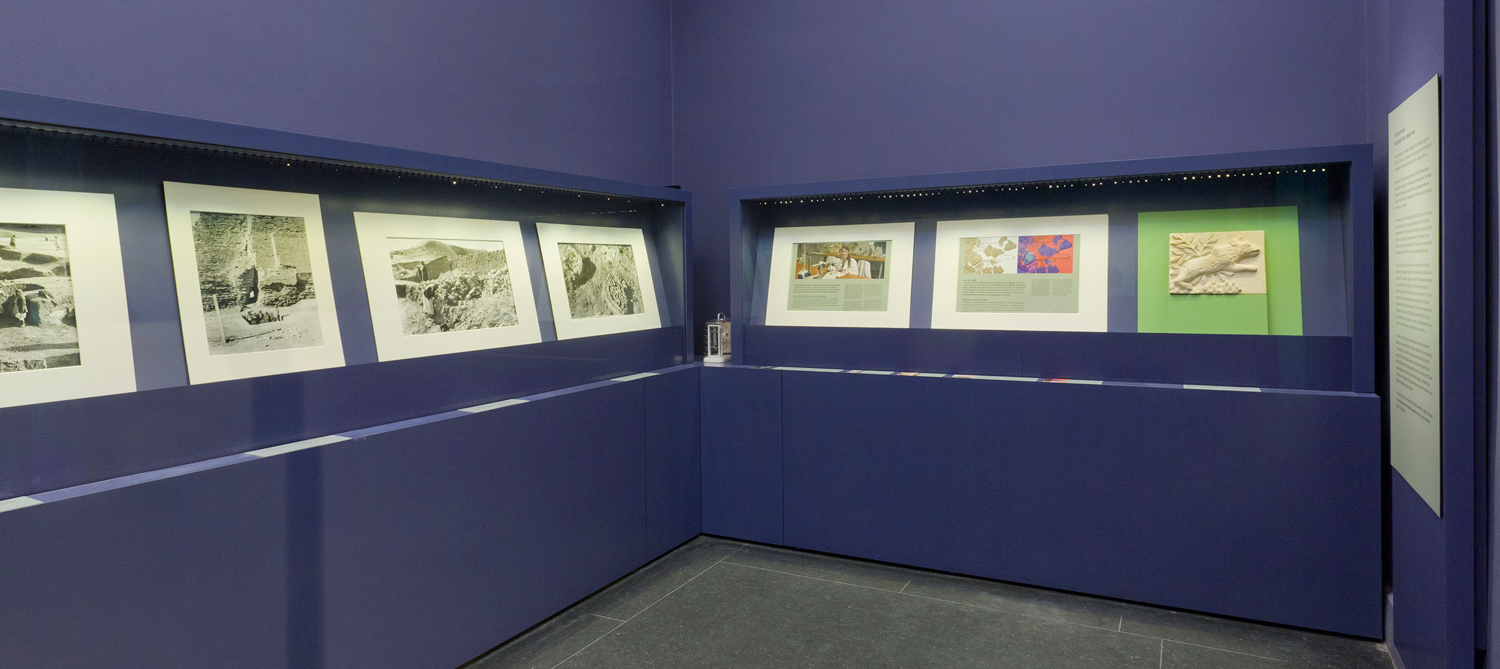The subject of this Ph.D. project is the stucco decoration from the city of Ctesiphon, which is regarded as an important link between antiquity and early Islam. The main research objective is the reconstruction of the important stages of the objects biography by means of conservation and archaeometric analyses.
Research
Archaeological artifacts are subject to permanent transformation processes. As a rule, two essential stages of existence can be established in which the objects change not only materially but also in their meaning: Stage one begins with the idea, covers the production and use and ends with the stuccoes being reclaimed by the earth. Stage two opens with the excavations by the (now) Museum of Islamic Art in 1928/9 and 1931/2 and continues to the present. They reached a climax with the extensive reconstruction and restoration measures in the early 20th century.
An important part of the stucco finds from Ctesiphon have been restored and reconstructed for exhibition purposes immediately following the excavations. There are discrepancies such as seemingly arbitrary motif-complements or objects whose part of ‘original’-substance underlies the additions considerably. Subsequent retouches often confuse the viewer with a misleading completeness and obscures the fragmentary character. As ‘palimpsests’, on which previous generations of restorers have ‘inscribed’ by their measures, they frequently require new interventions.

Showcase at the exhibition “Das Erbe der alten Könige. Ktesiphon und die persischen Quellen islamischer Kunst” with examples of the conservation-scientific work done on the stuccoes from Ctesiphon | Foto: Hans-Dietrich Beyer | © Museum für Islamische Kunst, Staatliche Museen zu Berlin – Stiftung Preußischer Kulturbesitz
This research project attempts to verify the existing hypotheses about the production, painting and dating by means of systematic visual investigations as well as current scientific methods and to substantiate them by means of scientific analyses. The central research objective here is the reconstruction of important sections of the object biography of the stucco decoration up to the present. A particular focus is on dealing with the controversial reconstructions of the 1930s. These are discussed in detail by means of the current debate on the concept of ‘authenticity’ in the museum landscape and the protection of cultural property.
Out of a total of nine sites within the Ctesiphon area, between two and six representative specimens have been chosen from each site, to which a detailed catalog of objects has been created. Through references of the archives of the Museum of Islamic Art, individual fragments of the archaeological notes can be matched to the reconstructed objects. One challenge is the fact that a large part of the excavated finds is located in the Baghdad Museum and the New York Metropolitan Museum. Research for the duration of one week in the United States allowed the documentation of the objects.
Methodological approach
A focus of the material research is on the original painting of the stuccoes, from which almost only the remains of the adhesive primer (gesso) can be seen today. With the help of the measuring center at the Institute of Chemistry of the Technische Universität Berlin as well as the analytical laboratory of the Hochschule für Technik und Wirtschaft Berlin, pigment determinations have been carried out under the inclusion of further finds such as wall painting fragments and color mixing pallets. It is apparent, that there has been a wide range of pigments used in Ctesiphon from Sasanian to early Islamic times.
In order to differentiate between the recent gypsum plaster base and the original stucco mortar, samples have been examined by the Department of Materials Engineering at the Faculty 2 of the HTW, using a scanning electron microscope. Further material analyzes for more precise mortar categorizations are being planned.
First results
The aspect of authenticity and communication in terms of archaeological objects, initiated by the research group’s discourse, has been reflected on the authors own material from the conservation/restoration point of view together with that of the monument preservation by Katharina Steudtner on the symposium “Museen – Orte des Authentischen” in Mainz (March 3-5, 2016; publication follows).
As collaborative work from the research project (C-3-1) on Ctesiphon, the special exhibition “Das Erbe der alten Könige. Ktesiphon und die persischen Quellen islamischer Kunst“, displays also a themed showcase with examples of the conservation-scientific work done on the stuccoes from Ctesiphon.
This Ph.D. thesis is being written within the program “Material Cultures and Object Studies” (MaCOS) of the Berlin Graduate School of Ancient Studies (BerGSAS).
